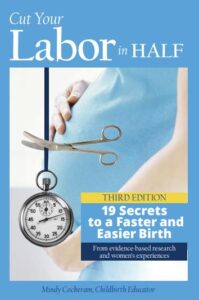.
Private Childbirth & Breastfeeding Education
Providing private in-person and virtual Childbirth & Breastfeeding Classes for a positive birth experience. Click Private Class Enquiry for more information.
In truth, most all women have a posterior (leaning back) cervix that moves anterior (leaning front) during labor. A posterior cervix is not a recognized medical condition nor is it mentioned in my midwifery textbook (Myles Textbook for Midwives) – but rather a bit of a nuisance for care providers who have short fingers and can’t get to the cervix to examine it by feel.

Nurses tend to use words like closed (no dilation), thick (not effaced/shrunk up) and hard (muscle not relaxing yet) to describe a cervix that has not yet begun labor. Therefore an open (dilated), thin (effaced/stretched up) & soft (relaxed opening) cervix is in labor. When labor begins, the cervix shrinks up (effaces) and disappears so the problem disappears – much in the same way as adding more air to a balloon reduces the nub. There is no way that I’m aware of to move a posterior cervix and also no need since the cervix thins out and shrinks up.
Click to explore


You could have the mom put both fists underneath her butt which will elevate her hips a bit and a posterior cervix is easier to reach if it is needed to check for dilation. An old midwifery tricked taught to an old L&D nurse. 😊
Great recommendation!